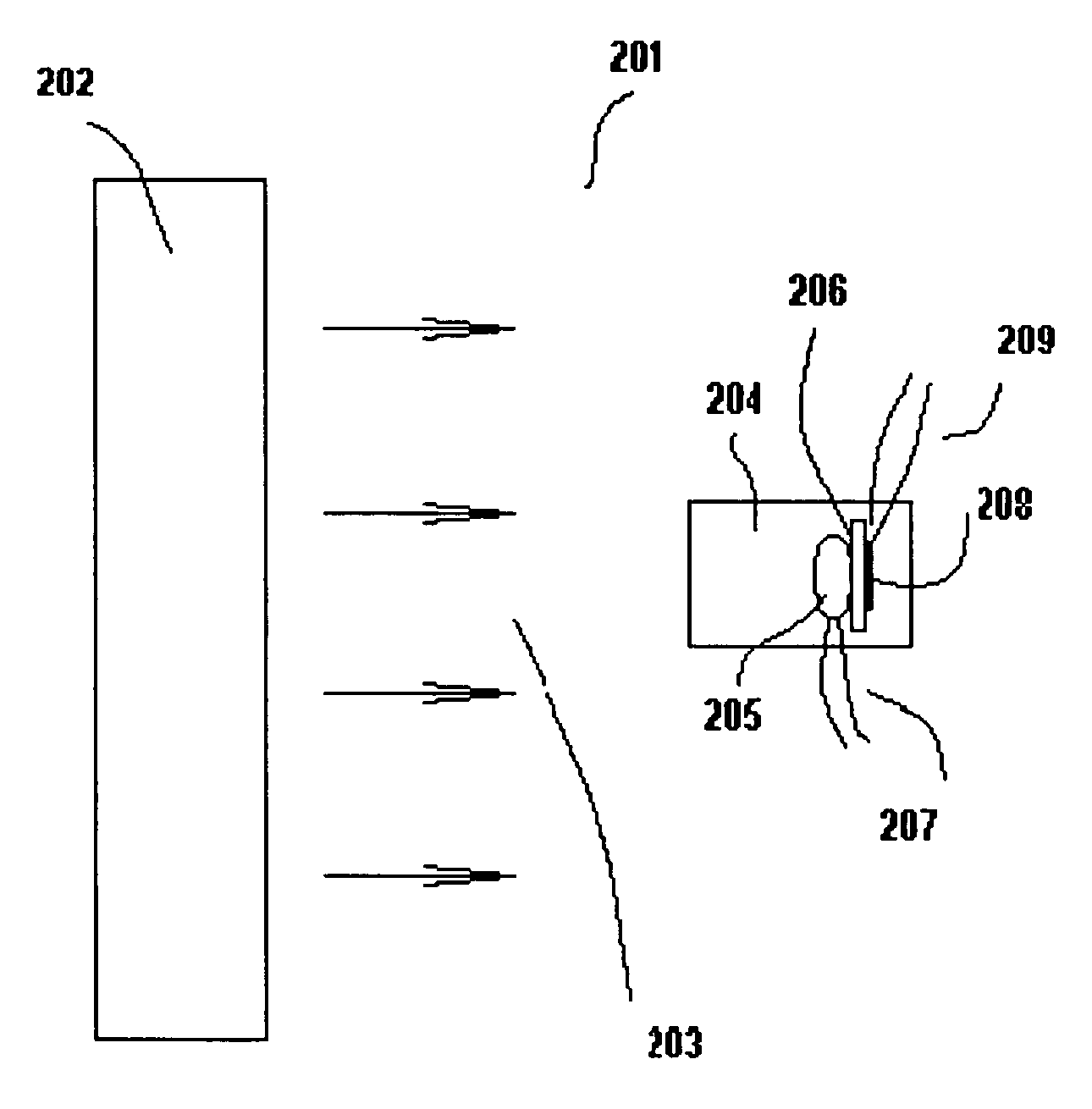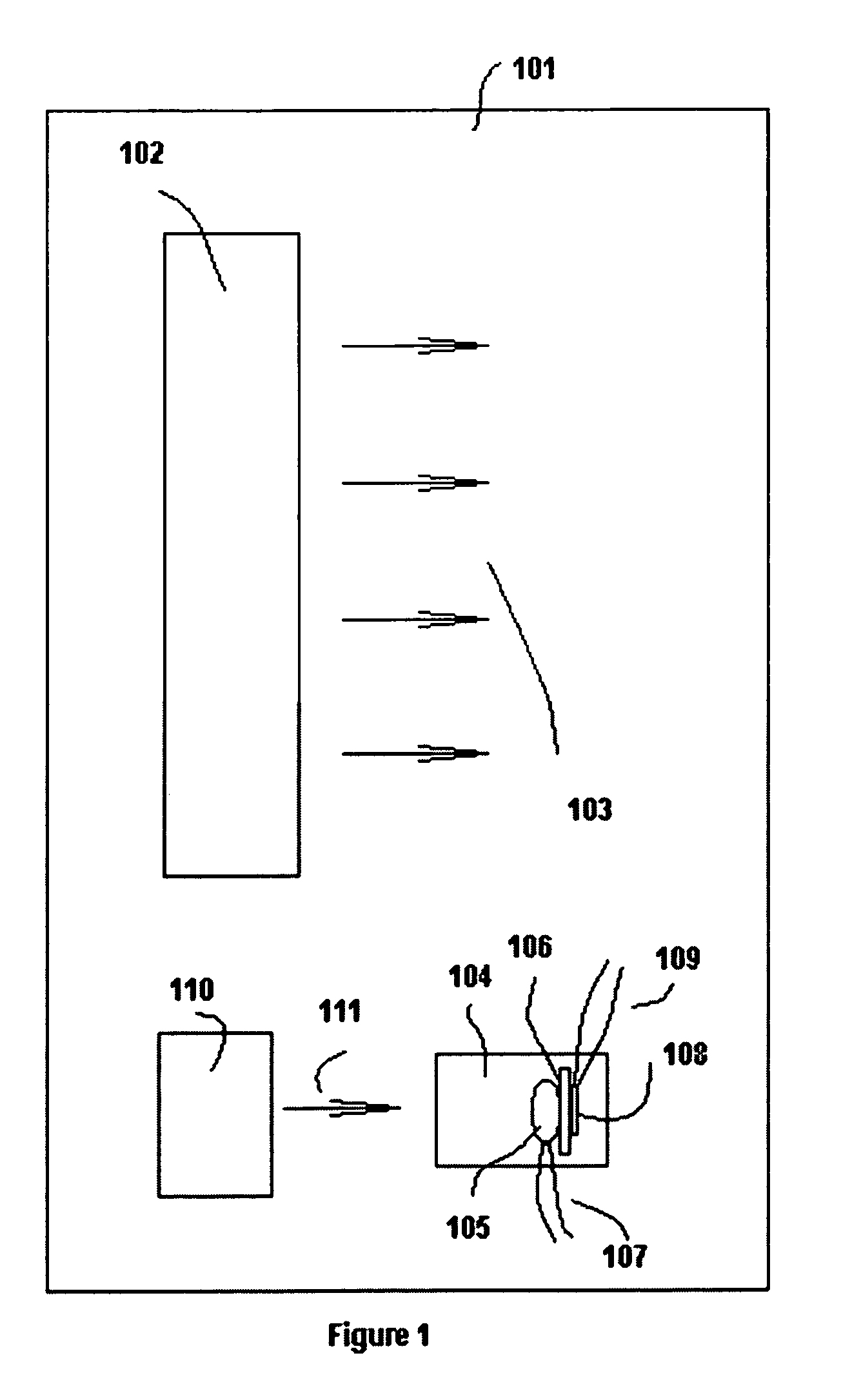Method of controlling a fluid flow
a fluid flow and fluid technology, applied in the direction of particle separator tube details, instruments, chemistry apparatus and processes, etc., can solve the problems of large and unacceptable ozone concentrations, large diameter of existing ozone monitors, and relatively high cost, so as to prevent sagging, increase diameter, and maintain the effect of wire straightness
- Summary
- Abstract
- Description
- Claims
- Application Information
AI Technical Summary
Benefits of technology
Problems solved by technology
Method used
Image
Examples
Embodiment Construction
[0071]FIG. 1 depicts a conventional electrostatic fluid accelerator (EFA) 101 EFA 101 includes array 102 operable to accelerate air in direction 103 by electrostatic force. Complementary to the electrode array 102 ozone detector 104 is included as part of EFA 101. Ozone detector 104 contains a base portion in the form of substrate 106 with ozone sensitive sensor 105 mounted to one side of substrate 106. Heating filament 108 is located on the other side of the substrate 106. Ozone sensor 105 is connected to control circuitry via wires 107. Heating filament 108 is connected to an appropriate power supply (not shown) via wires 109.
[0072]Mechanical fan 110 is provided to blow air through ozone detector 104. A typical commercially available ozone detector made by a company such as City Technology (Citytech) requires an airflow of at least 2 liters per minute through sensor 105. Fan 110 should capable to deliver that amount of air. Unfortunately, suitable mechanical fans are noisy and do ...
PUM
 Login to View More
Login to View More Abstract
Description
Claims
Application Information
 Login to View More
Login to View More - R&D
- Intellectual Property
- Life Sciences
- Materials
- Tech Scout
- Unparalleled Data Quality
- Higher Quality Content
- 60% Fewer Hallucinations
Browse by: Latest US Patents, China's latest patents, Technical Efficacy Thesaurus, Application Domain, Technology Topic, Popular Technical Reports.
© 2025 PatSnap. All rights reserved.Legal|Privacy policy|Modern Slavery Act Transparency Statement|Sitemap|About US| Contact US: help@patsnap.com



